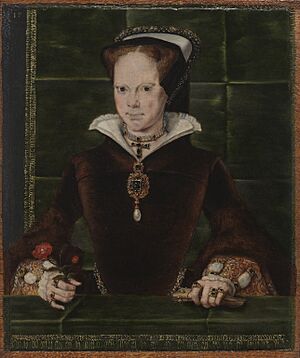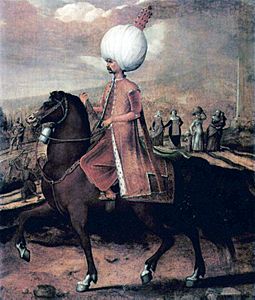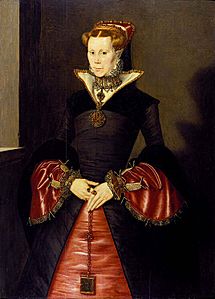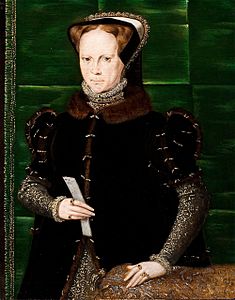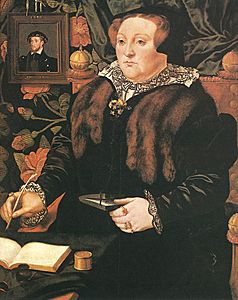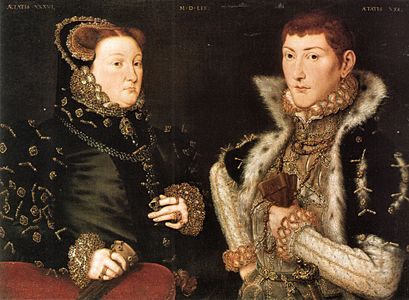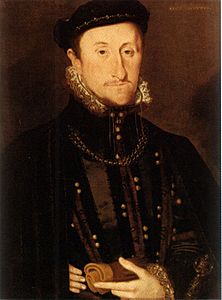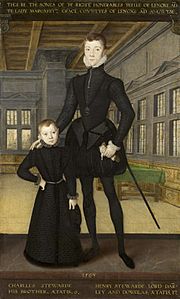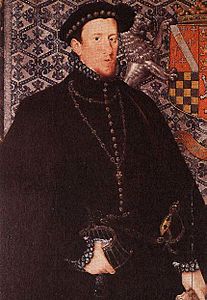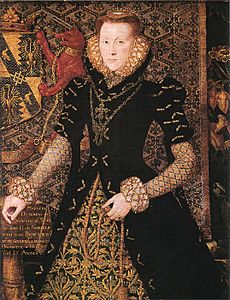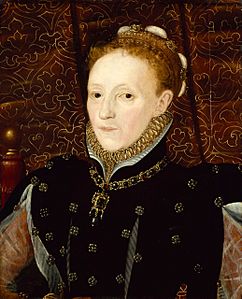Hans Eworth facts for kids
Hans Eworth (born around 1520, died 1574) was a talented painter from Flanders (a region in modern-day Belgium). He moved to England in the mid-1500s and became a successful artist in London during the Tudor period. Eworth was known for painting portraits of important people, like nobles and royals. He also created allegorical paintings, which are pictures that tell a story or represent an idea using symbols. Today, about 40 paintings are believed to be his work. These include famous portraits of Queen Mary I and Queen Elizabeth I. Eworth also did decorative work for Queen Elizabeth's Office of the Revels, which organized royal entertainment.
Eworth's Artistic Journey
We don't know much about Hans Eworth's early life or how he learned to paint. Records show that a "Jan Euworts" became a master painter in Antwerp (a city in Flanders) in 1540. It's thought that this is the same person. In 1544, a painter named Jan Ewouts was asked to leave Antwerp because of his religious beliefs, which were different from the official church. By 1545, Eworth was living in London, England.
His earliest known paintings are from around 1549 to 1550. One important work from this time is a special portrait of Sir John Luttrell. This painting shows Sir John with the goddess Pax, who represents peace. It celebrates Sir John's military actions and the Treaty of Boulogne. This treaty, signed in 1550, finally brought peace between England, Scotland, and France after many years of war. Eworth often signed his paintings with a special "HE" symbol.
Painting for Royalty
Many experts believe that Queen Mary I was Eworth's most important supporter. Several of his portraits of Queen Mary I are similar to one found in the National Portrait Gallery, London. This painting is signed with his "HE" symbol and dated 1554. Other portraits show Queen Mary in different clothes from later years, suggesting they were painted between 1555 and her death in 1558.
After Queen Mary I died and Queen Elizabeth I became queen, the country's religious and political mood changed. In 1560, Eworth painted a portrait of Anne Askew. She was a Protestant who was executed for her religious beliefs.
Over the next ten years, Eworth continued to paint portraits of important noble families. These included paintings of the Duke of Norfolk and his wife, and the Earl and Countess of Moray.
Later Works and Decorations
Even though many of Eworth's paintings have his "HE" symbol, it can sometimes be tricky to know for sure if a painting is his or to identify the people in his portraits. For example, a famous painting once thought to be of Lady Frances Brandon is now known to be Mary Nevill, Baroness Dacre and her son. Another famous painting, Elizabeth I and the Three Goddesses (1569), is now widely accepted as Eworth's work.
Like many artists of his time, Eworth also worked on decorations. He helped design the sets for a special show (called a masque) that Queen Elizabeth I held in 1572. Records show that Eworth was still designing for the Office of the Revels in 1573. He is thought to have passed away in 1574.
Gallery
-
Suleiman the Magnificent on horseback
-
Henry FitzAlan, 19th Earl of Arundel as a Roman Emperor, 1550
-
Portrait of an Unknown Lady, sometimes called Mary I (possibly Jane Dormer or Lady Jane Grey), around 1550–55
-
Mary Fiennes, Baroness Dacre, around 1555–1558, oil on panel
-
Mary Fiennes and her son Gregory Fiennes, 1559
-
Henry Stuart, Lord Darnley, and Charles Stuart, 1563
-
Protestant Martyr Anne Askew, 1560


